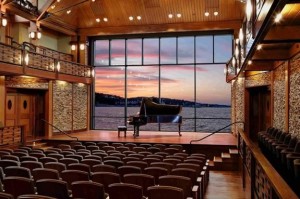
I heard once that in the classical music world you get one good riot per century. I suppose it’s not all that surprising. Art is naturally progressive—forever moving towards the unknown and therefore the disturbing. Many audiences find themselves pigheadedly prescribed to the traditions with which they developed, to the point where deviations are met with wary unwelcome. Friction develops between traditionalists and innovators, and environments to alleviate it are few and far between. Thus, pressure builds until it can be suitably (and publicly) released. For example, take a gentleman on his way to a premiere at his favorite concert hall. He puts on his fine charcoal suit. He and his wife go to dinner beforehand and select a pricier wine. He arrives at the venue and takes his seat next to his friends, also veterans of the symphony’s many seasons. The lights dim and he settles in for the music. It begins, but something is off. These harmonies, the rhythms, the melodies, they’re all wrong. It just sounds bad. Where are the cadences? What happened to the march? Just a week ago, Beethoven’s 9th was played on this very same stage! This outrage, this meaningless noise, doesn’t deserve to share a stage with Beethoven! And it’s not just this piece. All these young “revolutionaries” are trying to upset a beautiful and noble tradition, one which can stand just fine on its own. It’s not hard to see how this could escalate if the entire audience feels this way, or (perhaps worse yet) if half the audience feels this way while the other half is enjoying innovation.
View Full Article »







